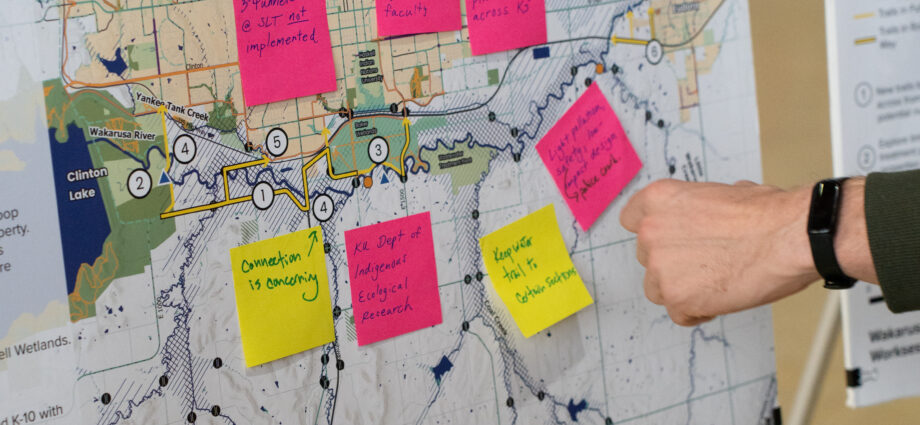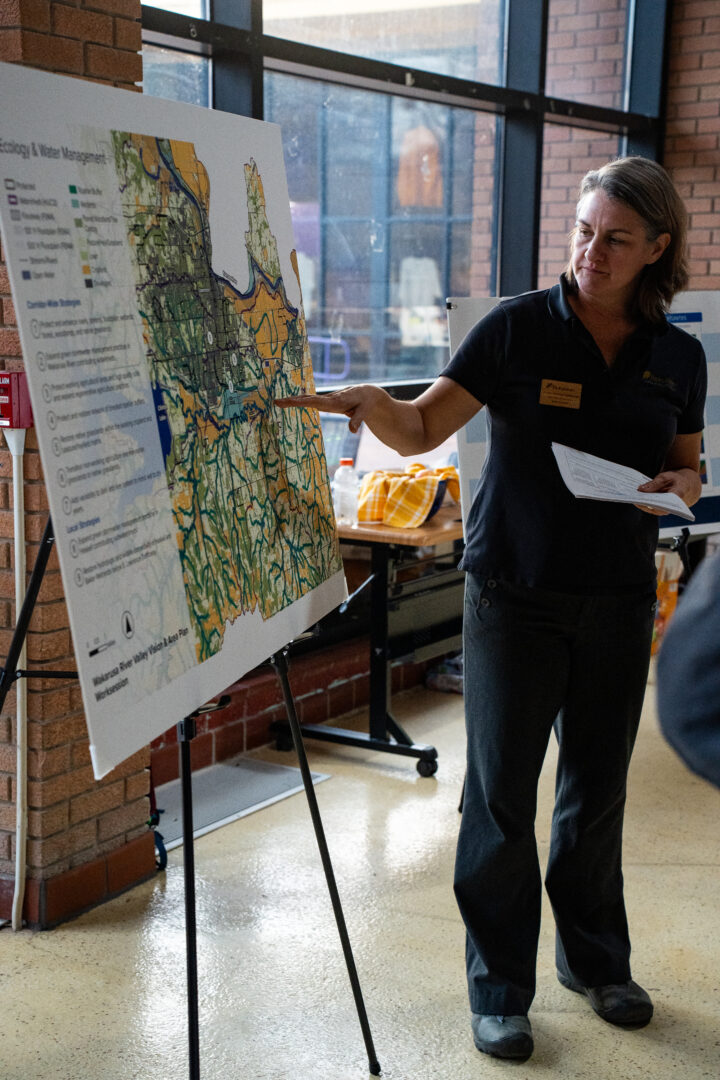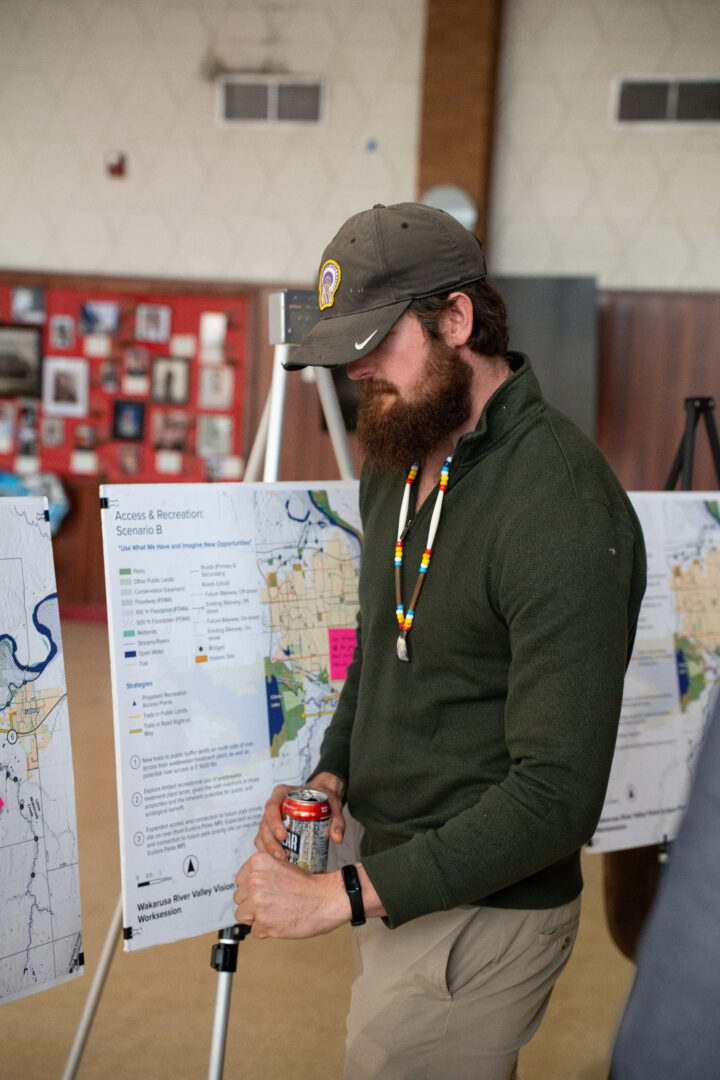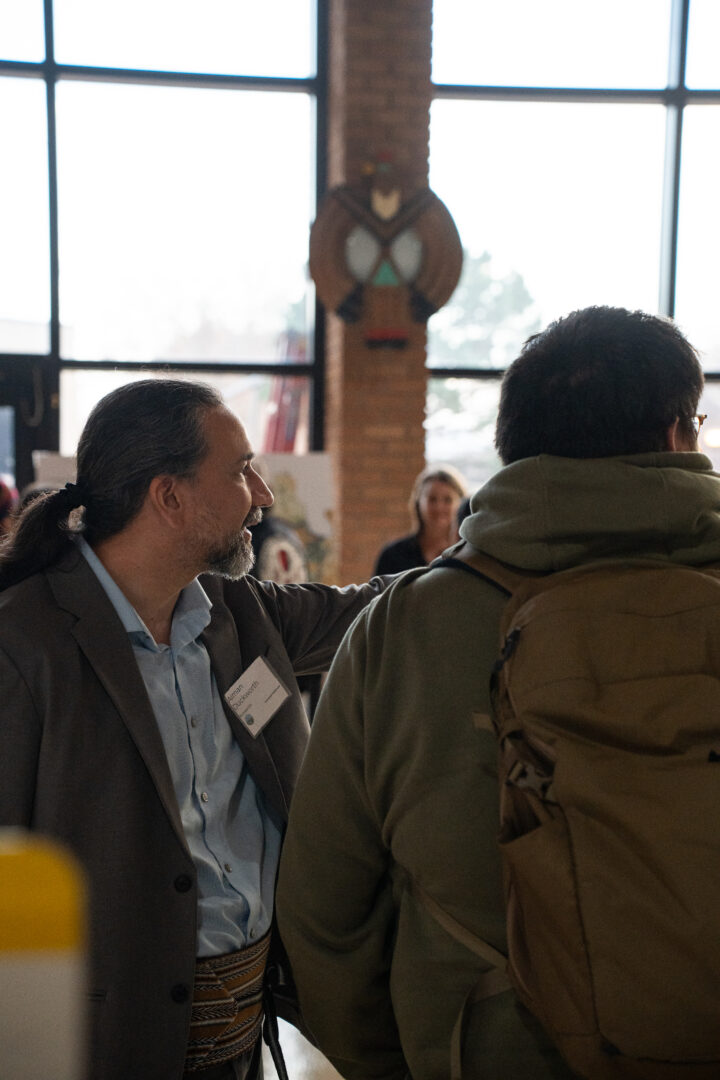On Wednesday, Biohabitats, an ecological engineering firm, held a community open event on campus to gather feedback from Haskell students and staff to help shape future plans for the Wakarusa River. This is an important part of Haskell’s history and education as the Wakarusa River is connected to the wetlands south of campus and is home to wildlife and carries significant historical importance to the University and neighboring tribes. Biohabitats, a firm working closely with Douglas County, is working to create holistic solutions for the natural and wetland habitats that run from Clinton Lake to Eudora, Kansas and connect to the Kansas River.
The Wakarusa River flow is controlled by Clinton Lake’s dam—built to manage water flow toward the Kansas river. The firm presented several proposed scenarios and asked community members to take these ideas, gather these thoughts and use them to help form a better and more fitting plan for the future of the river. Haskell staff and students also visited to inquire about what the possibilities are and provide personal feedback. With both rivers having a history of flooding over the past century in various locations. Biohabitat aims to maintain while also identifying areas where adjustments can be made.
These three scenarios are preliminary plans intended to be judged and amended by the community. Scenario A focuses on both ends of the Wakarusa River in specific points of the Clinton Lake area to just west and south of the wetlands. including a new pedestrian bridge nearer to lake clinton, improved park or river access in the wetlands along the river. Scenario B includes points of interest in the flood plains south of K-10, includes new trails to buffer the lands on the north side of the river, opposite the waste water treatment plant. Expanded access for the parks, and looking into limited recreational use of the wastewater treatment plants land. Scenario C is located further east, mainly near Eudora and Spring Creek will look into new trails , recreational opportunities and developments in the area, study if there is to see whether a pedestrian or biking bridge would be a better fit and explore other options for river access.
Speaking with Biohabitat’s employees and administrators spoke on how private landowners not only own land up to the river, but in Kansas they can also own the waterway itself which is not the same in every state. In many other states the private land owners don’t own a portion of waterways that may cross the land they own. This can make the project more lengthy and complex.
Biohabitats, recognizing the strong historical importance to Haskell and the local community, reached out to Tyler Moore, a Haskell alumnus, to gather further understanding of the subject as Moore put together a document with stories and information he gathered—not just from being at Haskell but also from the Indigenous communities he interviewed who could speak about the topic and what the future of the wetlands means to them. Speaking with him he was very passionate about the subject and demonstrated a strong commitment to preserving the wetlands and keeping them healthy and protected. Moving forward, the scenarios that are published are not final and serve as early plans and ideas. Nothing is concrete and all elements are subject to change.









